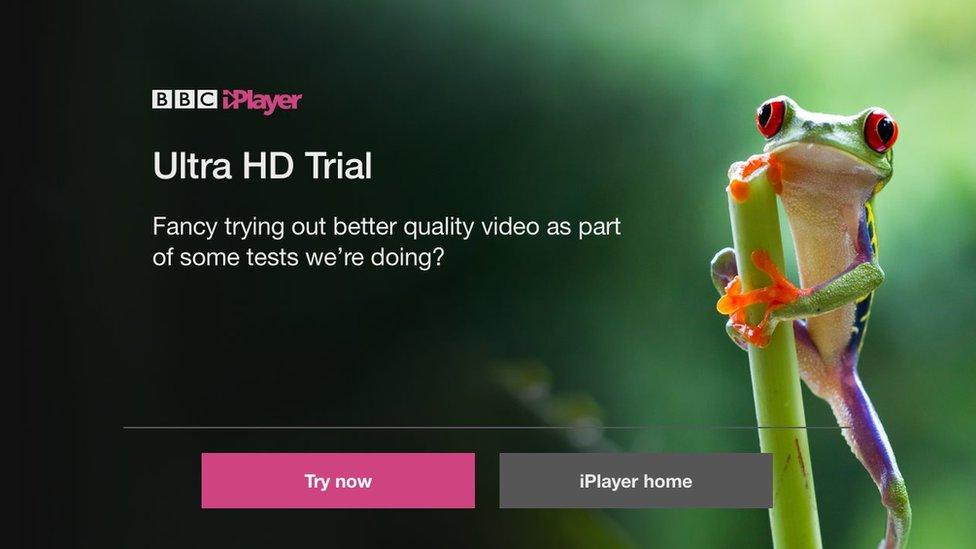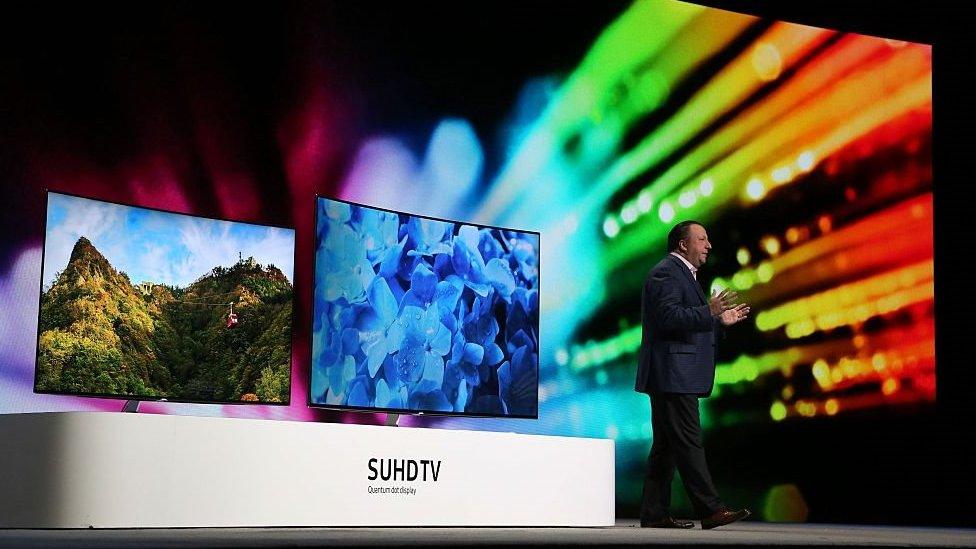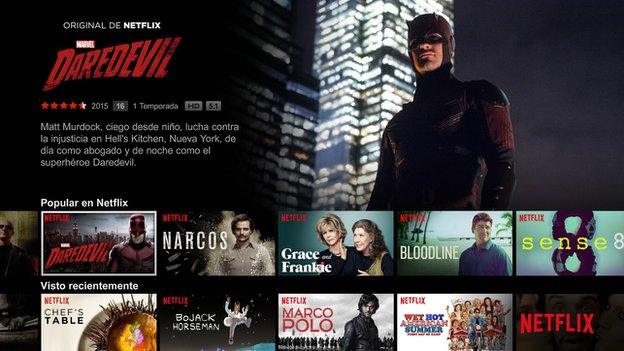BBC tests 4K Planet Earth II in HDR on iPlayer
- Published

The BBC wants TV manufacturers to support its trial
The BBC has begun a trial of 4K high dynamic range (HDR) video on its iPlayer streaming platform.
The test involves four minutes of footage from its Planet Earth II series, which promise to reveal more detail and present more vibrant colours than was possible before.
It is part of efforts to develop technologies that will make live broadcasts in the new formats possible.
But only a minority of TVs can screen the footage at this stage.
"One of the clips is a frog on a leaf with lots of rain, and the reason this is so interesting is that the redness of the frog is a really deep Ferrari red that you would never get in broadcast television at the moment," explained Phil Layton, head of broadcast and connected systems at BBC Research & Development.
"We want to show that this is how the BBC could make ultra-high definition HDR material available to iPlayer.
"And we want to use this as a trigger to work with manufacturers to get their products updated so there's a pathway there for future on-demand BBC content."

You probably cannot see this frog as intended because your monitor is unlikely to support HDR
As the trial went live, only Panasonic's latest screens supported the test footage in 4K.
But the displays were still not able to show the HDR enhancement because they do not yet support the underlying technology - co-developed by the BBC and Japan's NHK - known as hybrid log-gamma (HLG).
Although most TV manufacturers can update their newer TVs to add support for HLG, it is unclear whether they will do so.
Holding back support would give them an opportunity to market future models as being the first to support the format closer to when it launches.
More pixels, better pixels
From the consumer's point-of-view, there are two key improvements.
A 4K picture - also referred to as ultra-high definition (UHD) - means that four times as many pixels are used than in 1080p HD.
This makes it possible to reveal details - such as the texture of an animal's fur or the faces of the crowd at a football match - that would have appeared more blurry otherwise.
WATCH: Will HDR make television more real?
The main caveats are that the TV needs to be suitably large and the viewers close enough to it, otherwise they will not appreciate the difference.
HDR takes advantage of the fact displays can go brighter than before to allow an image to be graded with more levels of brightness between black and white.
This is not about everything looking brighter, but rather using the greater contrast range to allow shadows to appear less murky and highlights - such as sunlight gleaming off water or stars twinkling at night - to be better defined.
In addition, HDR uses a wider colour space - meaning it is capable of showing shades of colours that could not be transmitted in traditional broadcasts, helping footage appear more lifelike.

Most of the mid-to-high end TVs unveiled at CES last January support 4K and HDR
Many people who have experienced both, say that HDR has a greater impact on picture quality than 4K.
"It gives more nuance to the picture, which if you are talking about Planet Earth is going to be amazing," said Stuart Miles, founder of the Pocket-lint news site.
"The best way to describe it is it's like when you add a subwoofer to a sound system.
"Until you've had it you don't realise you need it, but once you've added it you ask how you could have lived without it."
Higher costs
The BBC will make the footage available via the different smart TV versions of its iPlayer app as soon as the relevant models support it.
But it will be some time before it starts offering scheduled broadcasts in 4K and HDR.

Amazon's The Grand Tour is available in 4K HDR streams
Mr Layton said the technological challenges could be resolved within the next 18 months.
But programmes will cost more to make if they take advantage of the innovations. So, the improved quality will have to be weighed against the fact the majority of viewers will be unlikely to have TVs that support the new technologies for some time to come.
In the meantime, Amazon and Netflix both offer some pre-recorded shows and movies in HDR and 4K.
And BT and Sky both offer movies and sport in 4K but not HDR.
- Published30 November 2016

- Published8 November 2016

- Published13 April 2016
